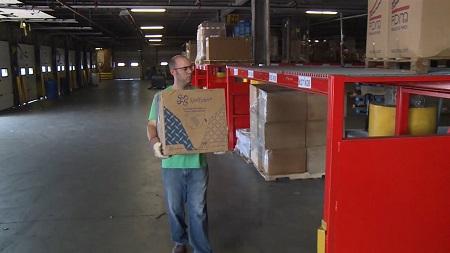Lifting heavy objects is a common task in many workplaces, from warehouses and factories to construction sites and offices. However, improper lifting technique can lead to serious injuries, such as strains, sprains, and back pain. That’s why it’s important for employers to educate their employees on the proper way to lift heavy objects, and to provide them with the necessary equipment to do so safely.
One of the key principles of safe lifting is to use the legs, rather than the back, to lift the object. This helps to distribute the weight more evenly and reduces the risk of injury. To lift an object properly, stand with your feet shoulder-width apart, bend your knees, and grasp the object firmly. Keep your back straight and use your leg muscles to straighten your legs and lift the object. Avoid twisting or turning while lifting, and keep the object close to your body.
Another important aspect of safe lifting is to use appropriate lifting equipment, such as a dolly or hand truck, whenever possible. This can help to reduce the weight of the object and make it easier to move. If you do need to lift a particularly heavy object, consider getting help from a coworker. Two people can lift an object more safely and easily than one person can.
In addition to following proper lifting technique and using appropriate equipment, it’s important to make sure that the work environment is conducive to safe lifting. This means keeping the area clear of clutter and other potential hazards, such as slippery floors or exposed wires. It also means ensuring that employees have access to the right tools and equipment, such as gloves and back supports, to help them lift safely.
In conclusion, safe lifting is an important part of maintaining a safe and healthy workplace. By following proper technique, using appropriate equipment, and creating a safe work environment, employers can help to prevent injuries and keep their employees safe.
Do you need Online Training for Safe Lifting in the Workplace?
Try a free demonstration of our Safe Lifting in the Workplace training programs, where you can see the full content of the training program and how the system works from the perspective of the trainee:










